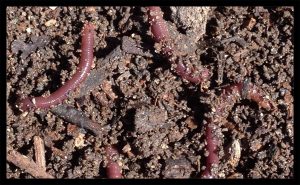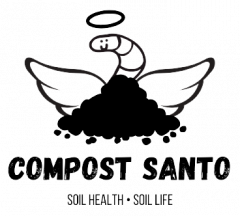About the Soil Food Web
Soil contains one of the most diverse habitats on earth. A single teaspoon of soil may contain millions of individual organisms and tens of thousands of species of microbes: bacteria, fungi, protozoa, nematodes, arthropods … on up to earthworms, ants, spiders, and voles.
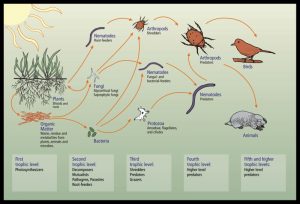
The more biodiversity contained within the soil, the healthier and more resilient the plants (and the animals that eat the plants) will be. Unfortunately, modern agricultural practices have abused our soil to the point where it can no longer support or sustain a healthy and diverse array of soil “critters”. Compost can return the nutrients absent in a lifeless soil, and support the organisms which will continue to build the soil for years to come.
Bacteria & Fungi
Bacteria and fungi form the base of the soil food web. They decompose plant and animal matter, absorb nutrients into their bodies, and eventually become food for other predatory organisms.
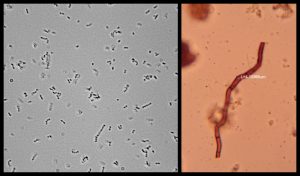
Protozoa
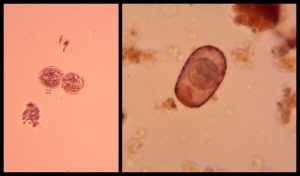
Next up in the food chain, protozoa are single-celled organisms that tend to feed on bacteria or fungi. Protozoa have huge appetites. It’s estimated that a single protozoan can consume 10,000 bacteria and release 8,000 molecules of plant-available nitrogen per day! (E. Ingham, Life in the Soil Lecture).
Nematodes and Arthropods
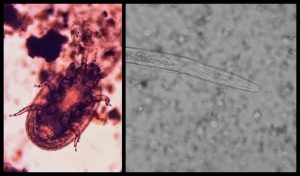
Earthworms
Earthworm tunnels direct air and water down through the soil and they leave deposits of nutrients and microorganisms in the form of castings. Their gut and outer slime layers kill pathogenic organisms, so earthworms cleanse the soil as they move through it.
